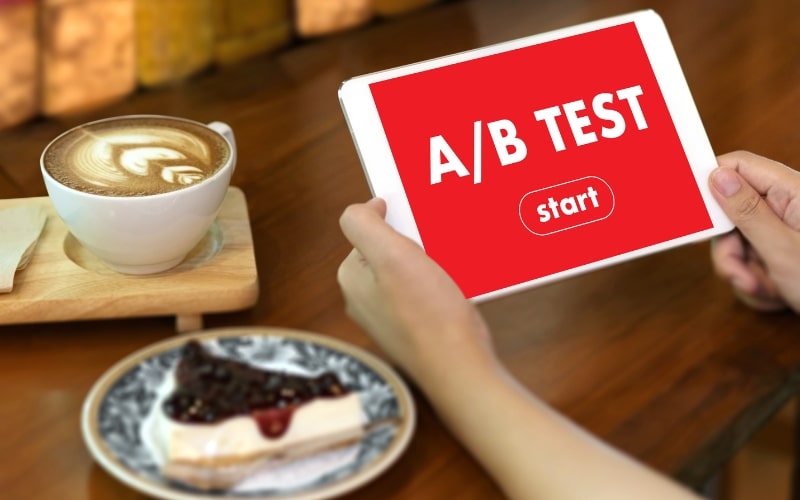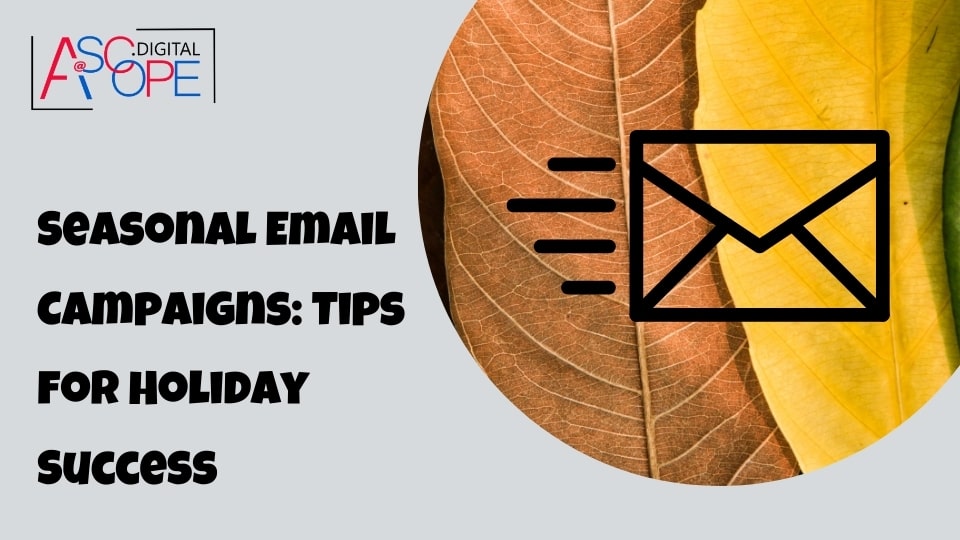The holiday season is a critical time for e-commerce businesses. It’s a period when consumers are actively looking to purchase gifts, take advantage of sales, and make the most of festive offers. Seasonal email campaigns, when executed correctly, can significantly boost sales, enhance customer engagement, and increase brand loyalty. In this comprehensive guide, we’ll explore essential tips for creating effective seasonal email campaigns that ensure holiday success.
Understanding the Importance of Seasonal Email Campaigns
Recognizing the impact of holiday-themed email marketing can help you leverage the increased consumer activity and enthusiasm during this time.
Capturing the Holiday Spirit
Consumers are more receptive to marketing messages during the holiday season. Tapping into this festive spirit can drive higher engagement and conversion rates.
Boosting Sales and Revenue
Seasonal campaigns can drive significant spikes in sales. With well-timed and well-crafted emails, you can encourage customers to make purchases, leading to increased revenue. This is especially important for e-commerce businesses that rely on holiday sales for a substantial portion of their annual revenue.
Enhancing Customer Engagement
The holiday season is a time when customers are more likely to engage with brands. By sending out personalized and festive emails, you can enhance customer engagement, encouraging them to interact with your content and make purchases.
Planning Your Seasonal Email Campaign

Effective planning is crucial for the success of your seasonal email campaigns. Starting early allows for thorough preparation and strategy development.
Start Early
One of the keys to a successful seasonal email campaign is to start planning early. The holiday season can be hectic, and starting early gives you ample time to strategize, create compelling content, and segment your audience effectively. Begin by outlining your campaign goals, identifying key dates, and preparing a content calendar.
Identify Key Holidays and Events
Different holidays resonate with different segments of your audience. Identify key holidays and events that are relevant to your target audience. Common holidays include Christmas, Thanksgiving, Black Friday, Cyber Monday, and New Year’s. Additionally, consider niche holidays that may be relevant to your brand and audience.
Set Clear Goals
Before launching your campaign, set clear and measurable goals. Whether it’s increasing sales, boosting website traffic, or enhancing customer engagement, having defined goals will help you measure the success of your campaign and make necessary adjustments.
Crafting Compelling Email Content
Creating engaging and relevant content is essential to capture the attention of your audience and drive conversions.
Create Festive and Engaging Subject Lines
The subject line is the first thing recipients see, and it significantly impacts open rates. Create festive and engaging subject lines that capture the holiday spirit and entice recipients to open the email. Use emojis, special characters, and compelling language to make your subject lines stand out.
Personalize Your Emails
Personalization is crucial for creating a connection with your audience. Use recipient names, recommend products based on past purchases, and tailor content to individual preferences. Personalized emails are more likely to resonate with recipients and drive conversions.
Highlight Special Offers and Promotions
The holiday season is synonymous with special offers and promotions. Highlight exclusive deals, discounts, and limited-time offers in your emails. Use persuasive language and eye-catching visuals to draw attention to these promotions, encouraging recipients to take advantage of them.
Incorporate Festive Visuals
Visual elements play a significant role in capturing the holiday spirit. Use festive visuals, such as holiday-themed graphics, images, and colors, to create a visually appealing email. Ensure that the visuals align with your brand’s aesthetics and the overall theme of the campaign.
Include a Clear Call-to-Action (CTA)
Every email should have a clear and compelling call-to-action (CTA). Whether it’s encouraging recipients to shop now, take advantage of a discount, or sign up for a special offer, the CTA should be prominently displayed and easy to follow. Use action-oriented language and make the CTA stand out visually.
Segmentation and Targeting

Proper segmentation and targeting ensure that your emails are relevant and personalized, leading to higher engagement and conversion rates.
Segment Your Audience
Segmentation allows you to send targeted and relevant emails to different segments of your audience. Segment your audience based on factors such as purchase history, browsing behavior, demographics, and preferences. This enables you to tailor your content to specific groups, increasing the likelihood of engagement and conversions.
Target Different Stages of the Customer Journey
Consider the different stages of the customer journey when creating your seasonal email campaigns. For new customers, focus on building brand awareness and encouraging first-time purchases. For returning customers, highlight exclusive offers and loyalty rewards. For inactive customers, use re-engagement campaigns to bring them back to your site.
Use Behavioral Triggers
Behavioral triggers are automated emails that are sent based on specific actions taken by recipients. Use behavioral triggers to send timely and relevant emails. For example, send abandoned cart emails to remind customers of items left in their cart, or send personalized recommendations based on browsing behavior.
Timing and Frequency
Sending emails at the right time and maintaining a consistent frequency can significantly impact the success of your campaigns.
Send Emails at Optimal Times
Timing is crucial for the success of your seasonal email campaigns. Research the best times to send emails based on your audience’s behavior and preferences. Generally, emails sent during the middle of the week and mid-morning tend to perform well. However, it’s essential to test different times and analyze the results to determine the optimal timing for your audience.
Maintain a Consistent Frequency
Consistency is key when it comes to email frequency. While it’s important to increase the frequency of emails during the holiday season, avoid bombarding your audience with too many emails. Find a balance that keeps your brand top-of-mind without overwhelming recipients. A good rule of thumb is to send one to two emails per week during the peak holiday season.
Testing and Optimization

Regular testing and optimization help refine your email campaigns for maximum effectiveness.
A/B Testing
A/B testing is a valuable tool for optimizing your seasonal email campaigns. Test different elements of your emails, such as subject lines, visuals, CTAs, and content, to determine what resonates best with your audience. Use the insights gained from A/B testing to refine your emails and improve their effectiveness.
Monitor Key Metrics
Monitoring key metrics is essential for evaluating the success of your email campaigns. Track metrics such as open rates, click-through rates, conversion rates, and revenue generated. Analyzing these metrics will help you identify areas for improvement and make data-driven decisions for future campaigns.
Optimize for Mobile
A significant portion of email recipients will open your emails on mobile devices. Ensure that your emails are optimized for mobile by using responsive design, concise content, and easily tappable CTAs. Test your emails on different devices and screen sizes to ensure a seamless experience for all recipients.
Best Practices for Holiday Success
Following best practices can enhance the effectiveness of your seasonal email campaigns and ensure holiday success.
Create a Sense of Urgency
Creating a sense of urgency can drive immediate action from recipients. Use time-sensitive language and countdown timers to emphasize the limited availability of offers. Phrases like “limited-time offer,” “ends soon,” and “while supplies last” can encourage recipients to act quickly.
Leverage Social Proof
Social proof, such as customer reviews and testimonials, can enhance the credibility of your offers and encourage purchases. Include positive reviews and testimonials in your emails to build trust and show recipients that others have had a positive experience with your products.
Use Gift Guides and Recommendations
Gift guides and product recommendations can simplify the shopping process for your customers. Curate gift guides based on different categories, such as “Gifts for Her,” “Gifts for Him,” and “Gifts for Kids.” Additionally, recommend products based on recipients’ past purchases and preferences to provide a personalized shopping experience.
Highlight Shipping Deadlines
Shipping deadlines are crucial during the holiday season. Clearly communicate the last dates for guaranteed delivery before specific holidays. This helps manage customer expectations and encourages timely purchases to ensure on-time delivery.
Offer Exclusive Deals for Subscribers
Reward your email subscribers with exclusive deals and offers. This can make your subscribers feel valued and incentivize them to make purchases. Promote these exclusive deals in your emails and emphasize that they are only available to subscribers.
Create a Seamless Shopping Experience
A seamless shopping experience is essential for converting email recipients into customers. Ensure that your website is user-friendly, mobile-responsive, and optimized for quick and easy checkout. Minimize any barriers that could prevent recipients from completing their purchase.
Personalize Holiday Greetings
Personalized holiday greetings can add a special touch to your emails. Address recipients by their names and include personalized messages that convey your appreciation for their support. Personalized greetings can enhance the emotional connection with your audience and foster brand loyalty.
Post-Holiday Follow-Up

Following up after the holiday season helps maintain customer relationships and prepares you for future campaigns.
Send Thank You Emails
After the holiday season, send thank you emails to express your gratitude to customers for their support. Thank you emails can strengthen customer relationships and leave a positive impression, encouraging repeat business.
Collect Feedback
Collecting feedback from your customers can provide valuable insights into the success of your seasonal email campaigns. Use surveys and feedback forms to gather information about their experience, preferences, and suggestions for improvement. Use this feedback to refine your future campaigns.
Promote Post-Holiday Sales
Post-holiday sales can help you clear out remaining inventory and maintain customer engagement. Promote post-holiday sales and special offers in your emails to encourage customers to continue shopping even after the holiday season has ended.
Plan for the Next Holiday Season
The end of one holiday season is the perfect time to start planning for the next. Analyze the performance of your current campaigns, identify what worked well and what didn’t, and use these insights to improve your strategies for the next holiday season. Continuous improvement is key to long-term success.
Leveraging Data and Analytics for Success
One of the key components of a successful seasonal email campaign is leveraging data and analytics to fine-tune your strategy. By analyzing past campaign performance, you can identify which tactics were most effective and which areas need improvement. Use this data to segment your audience more accurately, ensuring that each group receives tailored content that resonates with them. Additionally, monitor real-time data during your campaign to make necessary adjustments. For instance, if you notice a particular subject line is performing exceptionally well, consider applying similar wording to other emails. This approach not only enhances the relevance of your messages but also increases engagement rates. As a result, your targeted emails are more likely to convert, thus improving traffic and sales for your website. Read more on the other reasons why your website isn’t getting traffic. Implementing these data-driven strategies can significantly boost the effectiveness of your holiday email campaigns, ensuring that you maximize your ROI.
Conclusion
Seasonal email campaigns are a powerful tool for e-commerce businesses looking to capitalize on the holiday season. By planning early, crafting compelling content, segmenting your audience, optimizing timing and frequency, and following best practices, you can create effective email campaigns that drive sales and enhance customer engagement. Remember to personalize your emails, create a sense of urgency, and provide a seamless shopping experience to maximize your holiday success. With the right strategies in place, your seasonal email campaigns can become a cornerstone of your e-commerce marketing efforts, driving significant revenue and building lasting customer relationships.


